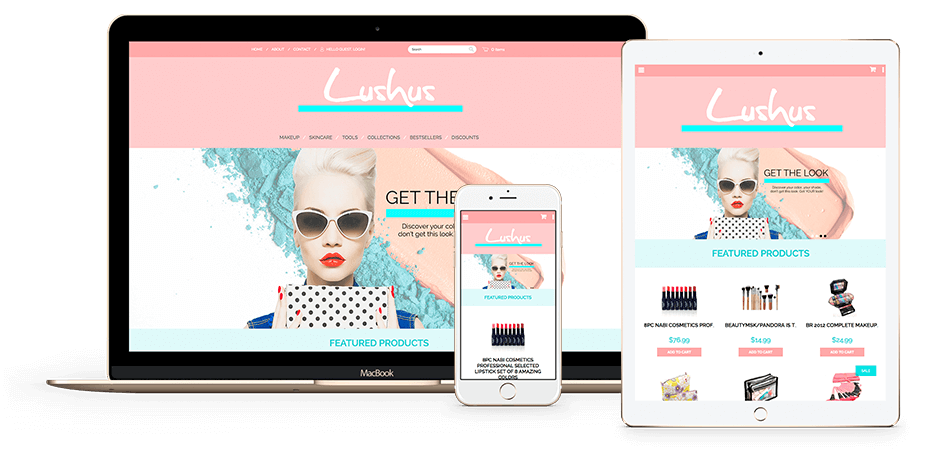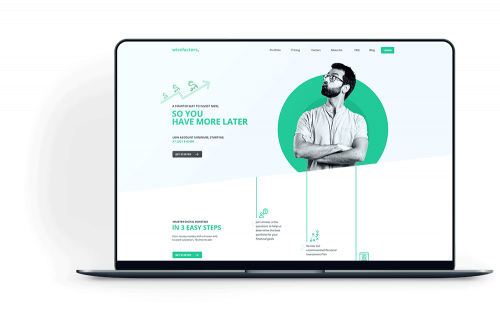How to Choose the Right Website Design for Your Business or Personal Brand
How to Choose the Right Website Design for Your Business or Personal Brand
Blog Article
Modern Internet Site Style That Catches Attention and Transforms
In an increasingly electronic landscape, modern web site layout has emerged as a crucial element in recording customer interest and driving conversions. As we explore these essential parts, it comes to be clear that understanding their interplay can significantly impact a website's performance and individual contentment.
Importance of Visual Hierarchy
Visual hierarchy is an essential component in site style, as it overviews users' focus and improves their total experience. By purposefully arranging material, designers can guide users to one of the most important details first, consequently boosting interaction and improving use. Efficient visual pecking order employs different methods, including dimension, spacing, color, and contrast. Larger components naturally draw the eye, while contrasting shades can stress key messages, making them attract attention amongst more controlled parts.
Integrating a sensible circulation in content setup is necessary; for example, positioning one of the most essential details on top of a web page cultivates prompt recognition. In addition, regular use typography, such as varying font sizes and designs, assists develop a clear content structure. This company not only aids in navigation however additionally builds depend on, as users feel much more comfortable when they can conveniently find what they are seeking.
Ultimately, a well-executed aesthetic hierarchy not only improves visual allure but also dramatically affects individual actions. By focusing on vital aspects and making certain a smooth experience, developers can properly transform site visitors right into customers, reinforcing the relevance of this fundamental layout concept in contemporary internet site growth.
Responsive Style for All Instruments
Developing a smooth experience throughout different devices is necessary in today's digital landscape, where customers accessibility websites from tablet computers, desktops, and smart devices alike. Responsive design is an essential method that ensures sites adjust fluidly to various display dimensions, resolutions, and positionings. By using adaptable grids, photos, and CSS media queries, designers can produce layouts that keep aesthetic honesty and capability, despite the gadget being used.
The relevance of receptive design prolongs past looks; it directly influences individual engagement and conversion prices. A web site that functions well on all gadgets encourages longer visits and lowers bounce rates, as customers are more probable to engage with material that is very easy to navigate. Search engines, especially Google, prioritize mobile-friendly websites in their rankings, making responsive style an essential component of search engine optimization (SEARCH ENGINE OPTIMIZATION)
Incorporating receptive style not only boosts user experience however also streamlines the advancement procedure. By producing a solitary website that works across tools, services can save time and resources contrasted to establishing separate mobile and desktop computer variations. Inevitably, receptive layout is a fundamental method for contemporary internet site style, guaranteeing access and satisfaction for all users, no matter their tool.
Engaging Interactive Components
While a receptive style lays the foundation for a functional web site, including appealing interactive aspects is critical for recording customer focus and cultivating much deeper links. Website Design. Interactive aspects, such as computer animations, tests, and clickable infographics, create a much more vibrant user experience, urging visitors to spend even more time on the website
Integrating interactive attributes can additionally assist customers via complex information, making it easier to digest material. Interactive sliders can illustrate item variants, while embedded videos can give presentations or endorsements that resonate more than static pictures or message. Moreover, gamification techniques, like benefits for completing jobs or engaging with content, can improve customer inspiration and retention.
Efficient usage of interactive elements not only enhances the user useful site experience however can additionally lead to greater conversion prices. It is essential to stabilize interactivity with performance; excessively complicated features might prevent website rate, adversely affecting customer complete satisfaction.
Structured Navigation Practices
Efficient navigation is a cornerstone of any kind of successful site, as it straight affects customer experience and web content access. Streamlined navigation methods make certain that individuals can conveniently find information, enhancing their communication with the website. A well-structured navigation food selection ought to be user-friendly and easy, typically including a minimal variety of main classifications to prevent overwhelming visitors.
To accomplish streamlined navigating, designers ought to prioritize an ordered structure that practically arranges web content. Executing breadcrumb routes can offer users with context about their existing area within the site, enabling for smooth backtracking. Furthermore, using drop-down food selections can efficiently preserve room while still giving access to subcategories.
Responsive design is important, as navigating needs to be practical across all tools (Website Design). Mobile individuals, in specific, gain from touch-friendly menus and retractable sections that maintain usability without endangering aesthetics

Reliable Call-to-Action Strategies
A well-crafted call-to-action (CTA) is vital for directing users towards preferred end results on a site, as it motivates them to engage with material or purchase. To maximize their effectiveness, CTAs need to be clear, compelling, and strategically put throughout the website.
First, utilize action-oriented language that connects urgency or value, such as "Start," "Sign up with Currently," or "Insurance claim Your Discount." This language not only inspires individuals however additionally sets clear assumptions about the following steps.
Second, take into consideration style aspects; CTAs must stand out aesthetically with contrasting shades, adequate whitespace, and noticeable positioning. A button that is simple to see and click rises the probability of user interaction.
Furthermore, personalizing CTAs based upon individual behavior or demographics can substantially improve engagement. Customized messages resonate much more with individuals, driving higher conversion prices.

Conclusion
To conclude, modern web site style stresses the combination of visual hierarchy, receptive layouts, engaging interactive elements, structured navigation, and effective call-to-action methods. These elements jointly improve customer experience, ensuring that visitors remain involved and inspired to check out web content further. By prioritizing these style concepts, services can dramatically improve customer moved here retention and conversion rates, eventually resulting in better success in the electronic landscape. The continuous advancement of web style highlights its vital role in effective online communication and marketing.
In an increasingly electronic landscape, modern-day web site style has emerged as a pivotal factor in recording customer interest and driving conversions.Aesthetic hierarchy is a critical component in internet site design, as it overviews users' attention and boosts their general experience.The significance of responsive layout prolongs beyond looks; it directly affects user involvement and conversion rates.Including receptive style not just improves user experience yet likewise enhances the growth procedure. Inevitably, receptive layout is a fundamental approach for modern-day website design, making sure access and satisfaction for all users, no matter of their device.
Report this page